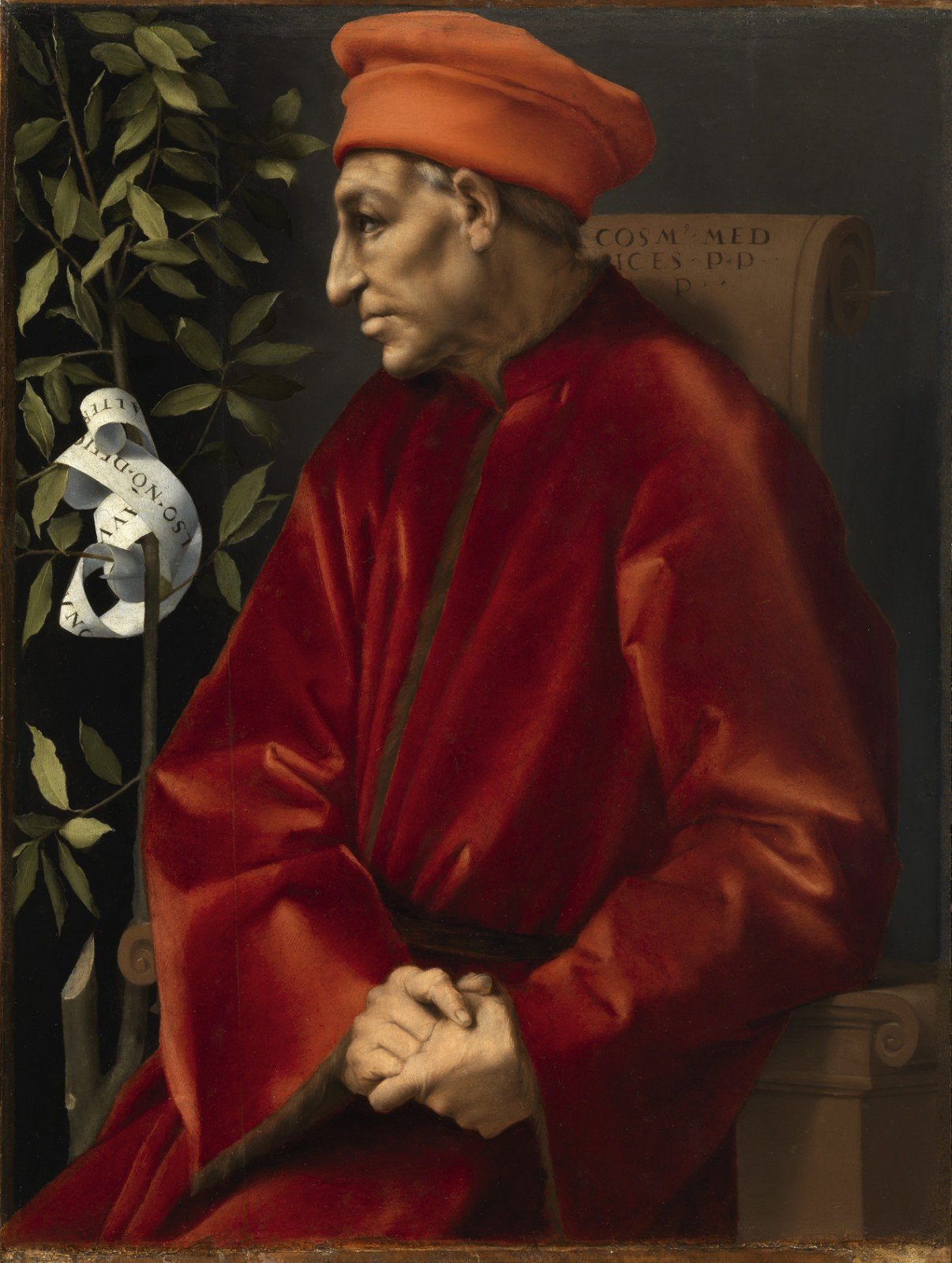The software engineer who programmed the conceptual side of the Italian Renaissance art was a banker
- Pontormo (Jacopo Carucci; Pontorme, Empoli 1494-Florence 1557), “Portrait of Cosimo the Elder”, 1518-1519, oil on panel; preserved in Florence, Galleria degli Uffizi, and on display from 8 March to 20 July 2014 at Palazzo Strozzi in Florence
The starting point for a conceptual approach to Renaissance art could be pinpointed in the flowering of the Neo-Platonic philosophy, with thinkers such as Nicola Cusano, Marsilio Ficino and Pico della Mirandola, who replaced the medieval notion of the Transcendent (whose extreme form is expressed by the gothic art) with a human-based attitude in which the individual, despite being a small part of the world, is nevertheless the centre of the universe. These Neo-Platonic ideas can be found in many works of the second-half of the fifteenth and of the sixteenth centuries, including, for example, the paintings by Sandro Botticelli, Antonio and Piero del Pollaiuolo, Leonardo da Vinci, Perugino, Luca Signorelli; the sculptures by Michelangelo; the architecture focused on the concept of the ideal city and the humanistic studies as those of Leon Battista Alberti. But all of this, perhaps, might not have happened without Cosimo di Giovanni de’ Medici the Elder (Florence, 27 September 1389 – Careggi, 1 August 1464), an Italian politician and banker, and the first remarkable statesman of the Medici family.
Strongly interested in ancient Greek and Latin culture, Cosimo the Elder commissioned the monk Leonardo Alberti de Candia – also known as “Leonardo da Pistoia, the monk” – to look for Greek and Latin manuscripts where the ancient Byzantines empire was. In the mid of the fifteenth century, during a trip to Macedonia, the monk discovered fourteen books of the “Corpus Hermeticum”, a greek text by Hermes Trismegistus. Back to Florence, Leonardo da Pistoia gave the manuscript to Cosimo de’ Medici, who asked Marsilio Ficino to translate it to latin. Since then the “Corpus Hermeticum” deeply inspired the Renaissance Neoplatonic and Hermetic thoughts, which then flourished in the Neo-Platonic academy founded by Marsilio Ficino, on behalf of Cosimo the Elder, in the Villa Medici at Careggi.
So, are we allowed to forget for a moment all the art history books and read this passage from the Hermeticum as a possible press release which introduces the portrait of Cosimo the Elder by Pontormo ideally exhibited in a perfect white cube?
If then you do not make yourself equal to God, you cannot apprehend God; for like is known by like. Leap clear of all that is corporeal, and make yourself grown to a like expanse with that greatness which is beyond all measure; rise above all time and become eternal; then you will apprehend God. Think that for you too nothing is impossible; deem that you too are immortal, and that you are able to grasp all things in your thought, to know every craft and science; find your home in the haunts of every living creature; make yourself higher than all heights and lower than all depths; bring together in yourself all opposites of quality, heat and cold, dryness and fluidity; think that you are everywhere at once, on land, at sea, in heaven; think that you are not yet begotten, that you are in the womb, that you are young, that you are old, that you have died, that you are in the world beyond the grave; grasp in your thought all of this at once, all times and places, all substances and qualities and magnitudes together; then you can apprehend God.
But if you shut up your soul in your body, and abase yourself, and say “I know nothing, I can do nothing; I am afraid of earth and sea, I cannot mount to heaven; I know not what I was, nor what I shall be”, then what have you to do with God?
December 16, 2014

